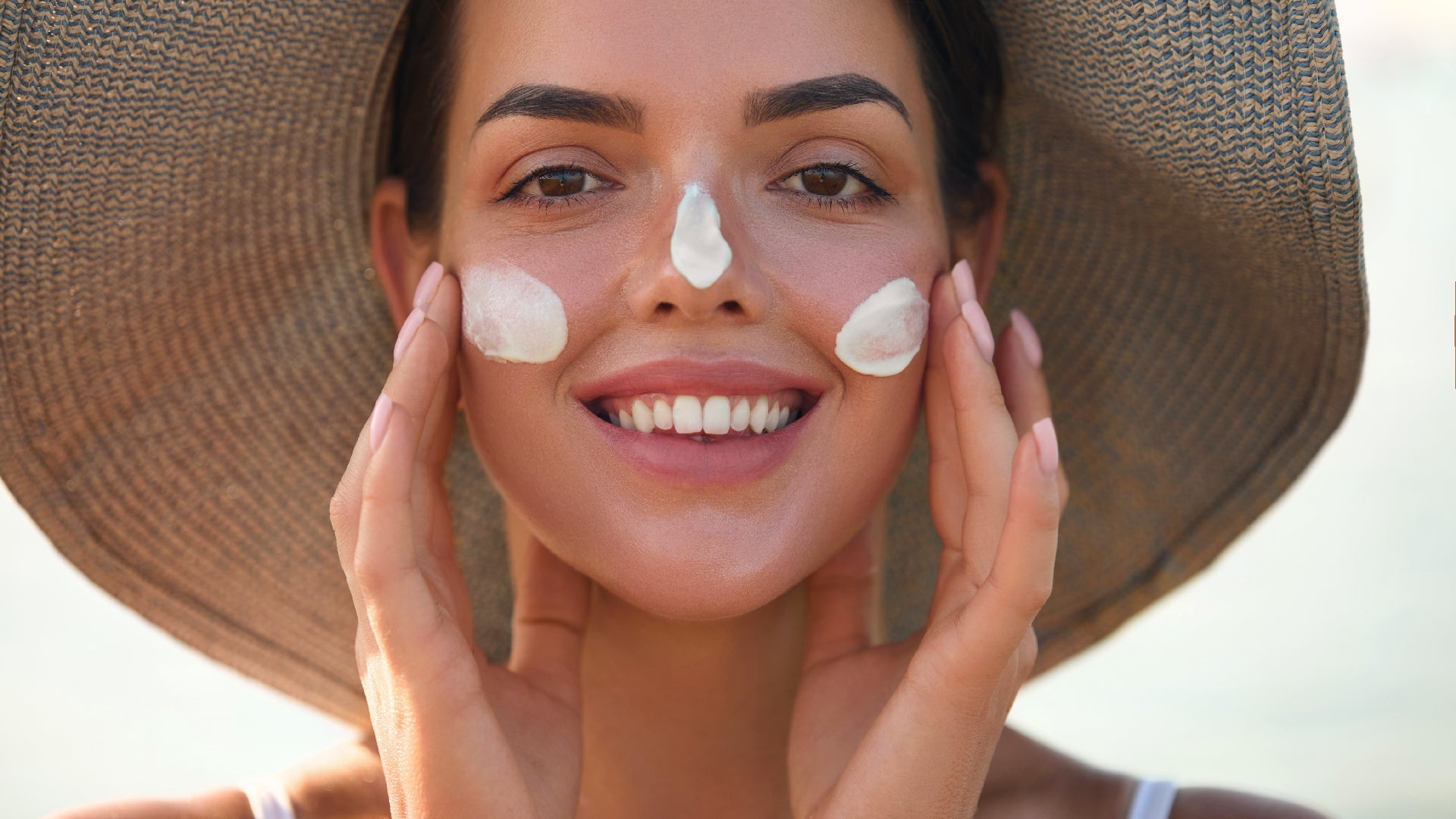
Is There A Right And A Wrong Way To Apply Sunscreen?
Sunscreen application might seem simple but do it wrong and it can leave your skin vulnerable to dark spots, premature wrinkles… and worse.
Applying facial sunscreen is arguably the nation’s least favorite beauty habit. Of course, we know it’s crucial to protect the skin from damaging ultraviolet (UV) radiation. But still, sun protection can be a real bore.
The most important thing to remember about applying sunscreen to your face, however, is that even the worst, most imperfect dousing of daily SPF is better than nothing at all. And the reason is simple. Sun damage is cumulative and it’s very, very real. In fact, it accounts for almost 90 percent of external skin aging like fine lines, wrinkles, loss of firmness and those pesky dark spots. Quick refresher: the skin on your face is thinner and more delicate than the rest of your body so it’s more susceptible to sun damage. This means that every day you skip facial sun protection you’re basically allowing UV rays to silently chip away at your skin’s youthful good looks. Not only that, but UV radiation is proven to be the primary cause of skin cancer.
The sun and your skin? Arch enemies.
We think you’ll agree that your skin deserves to stay ahead of the sun damage game so, while it may not be super-glamorous or immediately gratifying, it’s important to know how to apply sunscreen. Get it right and you'll know you're doing everything you can to help preserve your youthful-looking skin while significantly reducing your risk of developing skin cancer.
So here’s your suncare lesson for today…
How To Master Your Sunscreen Technique
1. DO Apply The Right Amount
This is by far the most important thing to know about applying sunscreen: you need more than you think. No matter if you’re applying a cream, oily, spray or serum, read the instructions on the label and don’t ever scrimp. If you do, you’re likely to cut the SPF level by as much as half. Eesh.
The rule of thumb is that most face SPF lotions require about a nickel-sized dollop to give you adequate protection. Our SPF 30 Mineral Sunscreen Facial Serum is quite different to regular sunscreen, however, so you don’t need to apply quite that much. You'll still need more than the normal serum sweet spot of one or two drops, though. We recommend three to five drops to hit that important SPF 30 mark.
2. DO Use The Dot & Blend Method
Rather than squirting your sunscreen into your hands then spreading it haphazardly all over your face, try dotting it on your forehead, cheeks, nose, chin and neck. This will ensure you get an even and thorough distribution which you can then gently spread all over using light circular motions.
3. DO Stick With Sunscreen That’s Formulated For The Face
Facial sunscreens like our awesome SPF 30 Mineral Sunscreen with Vitamin C are crafted specifically to care for the delicate skin on your face which makes them far superior to regular body sunscreen. Body sunscreen is great for, well, the body, but facial formulations are typically more gentle, lightweight and often made with non-comedogenic ingredients to minimize pore blockage.
Ours also contains other fabulous ingredients like sodium ascorbyl phosphate (vitamin C), aloe vera and vegan marine collagen to feed your skin with antioxidants, hydration and brightening goodness.
4. DO Get Your Timing Spot On
It’s important to know that while mineral sunscreens (they’re the ones that contain ingredients like zinc oxide and/or titanium dioxide) have an immediate effect, chemical sunscreens don’t. In fact, these should always be applied a good 20-30 minutes before heading out into the sun to give them time to soak into your skin and get ready to work.
If you’re not sure what kind of sunscreen you’re using, check the label and, if in doubt, apply yours in good time before exposing your skin to any kind of UV radiation.
5. DO Know How To Layer
If you’re applying other skincare products, always apply these before regular sunscreen lotion. Of course, our innovative serum should be applied after cleansing and before moisturizing (it is a serum after all!), but any other sun protective skincare product should be the final step of your morning routine. You can then apply makeup on top if you wish. Just make sure you wait a few minutes for the sunscreen to settle, then use light pressure only.
Common Sunscreen Mistakes You Don't Want To Make
1. DON’T Rely On Makeup To Protect Your Skin
Sure, SPF makeup is better than nothing, but the amount you apply is rarely enough to give you adequate protection to shield your skin from those harmful UV rays. You’re much better off applying a dedicated, broad-spectrum facial sunscreen underneath your foundation for reliable protection.
We know all this can be a bit of a hack but, honestly, our SPF 30 Mineral Sunscreen Facial Serum makes it so easy to protect your skin, there are no excuses for not using it on the reg.
2. DON’T Forget These Often-Missed Areas
Two of the most common skin cancer hotspots are around your hairline and along your part so make sure you protect these just as you do your face. Don’t fancy rubbing cream into your part line and ruining your hair? Invest in a dedicated, oil-free SPF spray which will do the trick nicely. Also, don’t forget to apply sunscreen around the entire perimeter of your neck, as well as over your ears, lips, eyelids and hands.
3. DON’T Rub It In Too Much
A light touch is the best approach when applying your sunscreen. How so? Because vigorous rubbing can irritate the skin. It also has the potential to disturb the carefully crafted formula and potentially break down the sunscreen’s protective film. Go gently, people!
4. DON’T Apply SPF To Dirty Skin
Sunscreen works way more efficiently when it’s applied to freshly cleansed skin. Applying it over an oily or sweaty face can create an uneven layer which won’t protect you as well as it should. This is why it’s beneficial to apply it first thing, after washing your skin as part of your regular morning routine.
5. DON’T Forget To Reapply
If you’re spending a lot of time outdoors, it’s important to reapply every two hours – especially if you’re swimming or doing activities which cause you to sweat. Sunscreens are broken down by exposure to sunlight so they become less efficient over prolonged periods of time outside. For even coverage when reapplying, give your face and neck a quick cleanse with a facial wipe and then apply generously.
Also, hear this, no sunscreen is entirely waterproof, it’s just not scientifically possible. They can be water-resistant, for sure, but 100 percent waterproof? Nope. That’s why reapplying when swimming or in the water is absolutely non-negotiable. You hearing us? Good.






